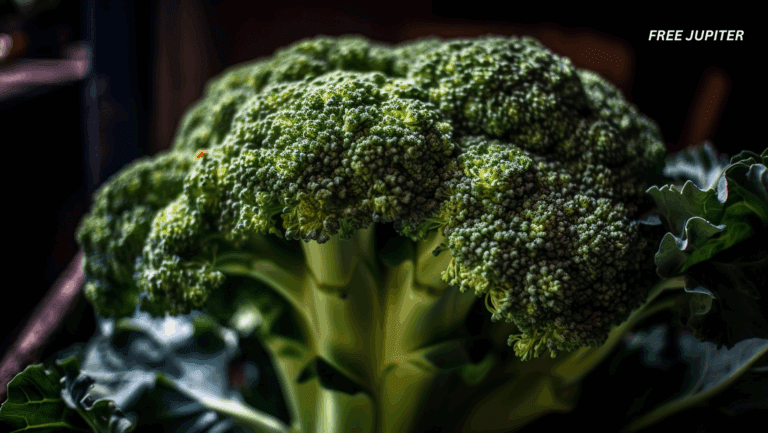In recent years, a new class of medications known as GLP-1 receptor agonists has quietly reshaped the way we approach weight loss and diabetes management. They’re often spoken of with a kind of hopeful excitement—like a secret shortcut whispered about in gyms, doctor’s offices, and even dinner parties. And with brand names like Ozempic, Wegovy, and Zepbound cropping up in conversations and prescriptions, you might be wondering: Is this the miracle I’ve been waiting for?
Well, not so fast.
According to leading physicians and researchers, these medications do work—but they’re not magic wands. They’re tools. And like any tool, how you use them makes all the difference.
So before you pin all your hopes on that weekly injection, here’s what the experts want you to understand first—no jargon, no lectures, just straight talk with a side of science.
📌 What Are GLP-1 Medications, Really?
Let’s start with the basics: GLP-1 stands for glucagon-like peptide-1. That’s just a fancy way of describing a hormone your body naturally produces. It’s part of a group of messengers that help regulate hunger, blood sugar, and digestion. When scientists figured out how to mimic this hormone in drug form, they realized it could be a game-changer for people with Type 2 diabetes—and, as it turns out, for weight loss, too.
Here’s how it works:
- It slows down how quickly your stomach empties.
- It reduces your appetite and cravings.
- It helps you feel full longer.
- And it improves how your body handles blood sugar.
Sounds ideal, right? And for many people, it is. But there’s more to the story.
Read more: A New Ozempic Side Effect Has Just Been Discovered—And It’s Turning Lives Upside Down
⚠️ Reality Check: This Is Not a Free Pass to Skip the Gym and Eat Cake
Dr. JoAnn Manson, a top doctor in preventive medicine at Brigham and Women’s Hospital in Boston, has seen the excitement surrounding GLP-1 drugs—but also the confusion. A lot of people, she says, think they can just take the shot and forget about everything else: no diet changes, no exercise, no effort.
“That’s simply not how it works,” she says. These medications are most effective when paired with smart habits. Think of it as teamwork: the drug does part of the job, and you do the rest.
So what does “the rest” look like?
Let’s break it down—quirk-free, science-lite, and full of useful advice.
🧠 1. You’re Not Just Losing Fat—You Could Be Losing Muscle, Too
One of the most misunderstood parts of weight loss on GLP-1s is that not all the weight you lose is fat. In fact, up to 25% of it may be muscle—and that’s not ideal.
Losing too much lean muscle can:
- Slow your metabolism
- Make you feel physically weaker
- Increase your risk of injury
- And make it harder to maintain your weight in the long run
Why does this happen? Well, if you’re eating less (which you likely are on GLP-1s), you might not be getting enough nutrients to keep your muscles strong. And without enough movement—especially resistance-based movement—your muscles don’t get the message that they’re still needed.
🍗 2. Protein Should Be Your New Best Friend—Start Every Meal With It
Doctors recommend starting each meal with 20 to 30 grams of protein. That might sound like a lot, but it adds up quickly when you’re eating the right foods:
- A chicken breast (30g)
- A scoop of whey protein powder (20–25g)
- A cup of lentils or beans (15–20g)
- Tofu, chickpeas, eggs, or Greek yogurt also work great
The general goal? 1 to 1.5 grams of protein per kilogram of body weight per day. If you weigh 150 pounds (68 kg), you’d aim for around 68 to 102 grams of protein daily.
And if your appetite is low—which is common on these meds—don’t be afraid to spread out your protein through snacks or shakes. A sip here, a bite there—it all helps.
🏋️♀️ 3. Resistance Training: The Unsung Hero of Healthy Weight Loss
Let’s face it—exercise can be intimidating. But when it comes to keeping your body strong on GLP-1 medications, it’s non-negotiable.
We’re not talking about boot camps or Ironman races. We’re talking about resistance training—simple, low-impact exercises that challenge your muscles.
This could be:
- Bodyweight squats or lunges
- Lifting light weights
- Resistance bands
- Pilates or yoga
- Wall push-ups or stairs at home
2 to 3 sessions per week—just 20 to 30 minutes at a time—can do wonders.
Also aim for 150 minutes of aerobic activity per week, like walking, biking, or swimming. It keeps your heart healthy and supports overall wellness, which is especially important while adjusting to the changes GLP-1s bring.
Read more: What Are ‘Ozempic Teeth’? The Latest Unusual Side Effect of the Weight-Loss Drug
💧 4. Hydration Isn’t Optional—It’s Critical
Many GLP-1 users experience constipation and dehydration. It’s one of the most common side effects, and often what drives people to stop the medication.
But you can reduce these symptoms dramatically with one simple change: drink more water.
The golden rule? 8 to 12 glasses per day.
And don’t forget that water can come from your food too. Eat plenty of:
- Watermelon
- Cucumber
- Berries
- Oranges
- Celery
Also, cut back on drinks that dehydrate you, like:
- Alcohol
- Caffeine-heavy beverages
- Sugary sodas
- Artificially sweetened drinks (they may trigger more cravings or gut discomfort)
Staying hydrated helps your digestion, energy levels, and even mood.
🛌 5. No Post-Meal Napping—Wait at Least 2 to 3 Hours
Here’s a lesser-known tip: don’t lie down after eating. Doing so can lead to acid reflux and heartburn, which are more likely to happen on GLP-1s.
Instead:
- Stay upright for at least 2–3 hours after meals
- Choose lighter, lower-fat foods—especially if you’re feeling queasy
- Add more fiber to your diet to ease constipation
Foods like oats, flaxseed, leafy greens, and pears are gentle and effective. They help keep things moving without upsetting your stomach.
🎯 A Final Word From the Experts: Set Realistic Expectations
Dr. Andres Acosta, a weight management specialist at the Mayo Clinic, warns that some people have a false sense of what these medications can do.
In clinical trials, patients lost significant weight—but those same trials included structured meal plans, fitness goals, and professional support. It wasn’t just the drug doing the work.
“People think it’s a miracle fix,” Acosta says, “but behavior still matters.”
Another voice of caution comes from Dr. Elizabeth Mietlicki-Baase at the University at Buffalo. She points out that some people gain back weight after stopping GLP-1s—and scientists are still figuring out how to prevent that.
The key takeaway: These medications can be a powerful ally, but they’re not permanent fixes or silver bullets. They’re most effective when part of a bigger, balanced plan.
Read more: Expert Shares Natural Drug-Free Method To Mimic the Effects of Ozempic
🧭 The Bottom Line
GLP-1 medications like Ozempic, Wegovy, and Zepbound offer real hope for people struggling with weight or Type 2 diabetes. But they’re not a replacement for the basics: good food, movement, water, and self-awareness.
If you’re thinking about starting a GLP-1, remember:
- Eat enough protein
- Lift something (even your own body weight) a few times a week
- Drink plenty of water
- Stay upright after eating
- Stay realistic about what the drug can and can’t do
In short: don’t expect the injection to do all the heavy lifting. Your long-term health still depends on the choices you make daily. The shot helps, but you make the difference.










